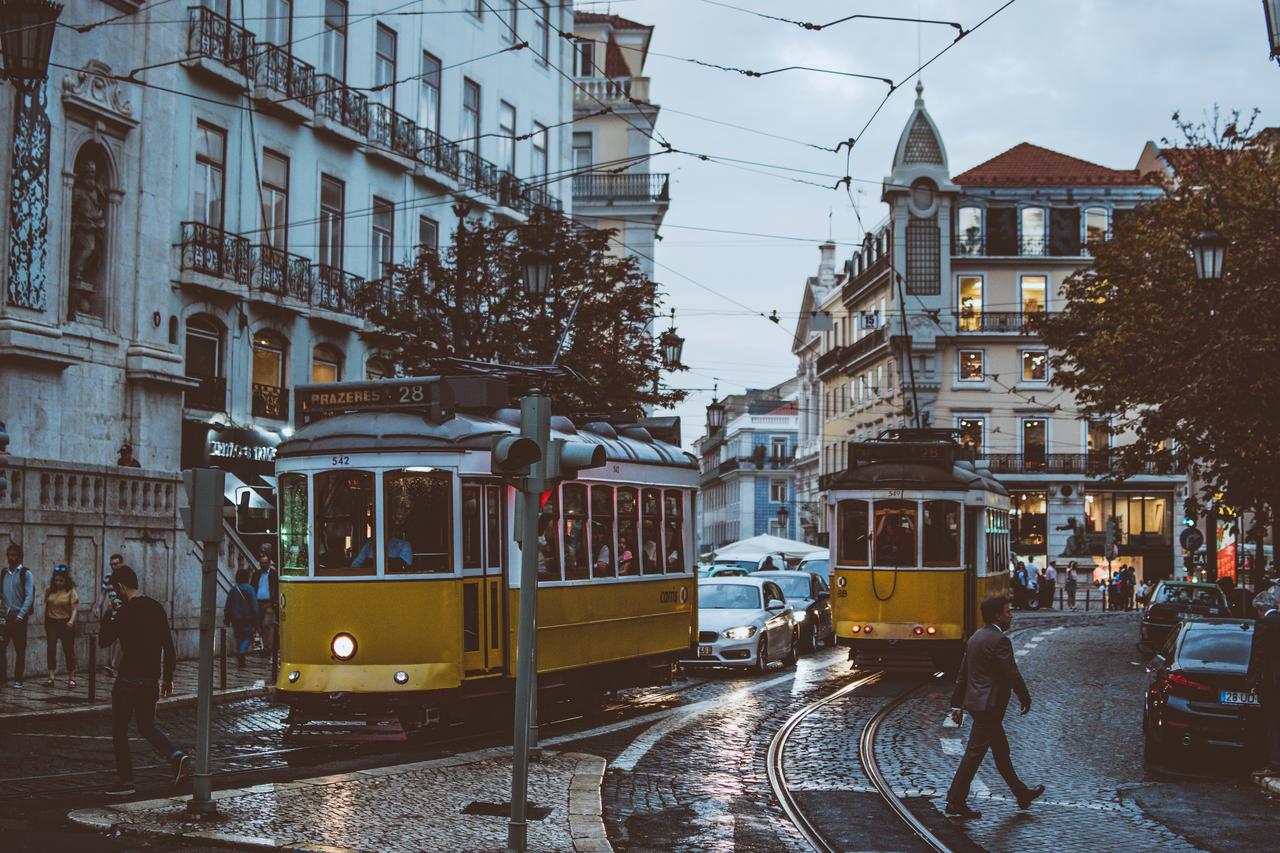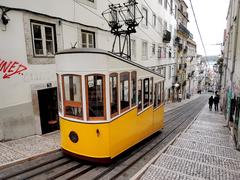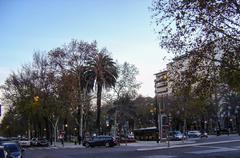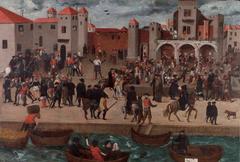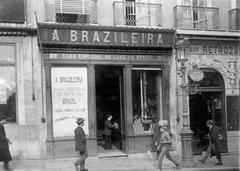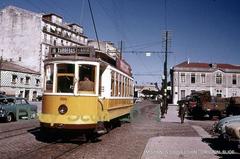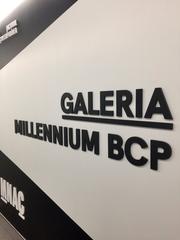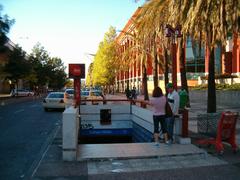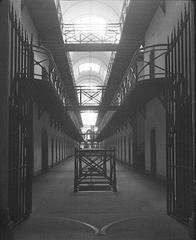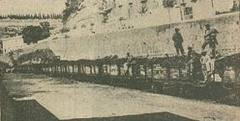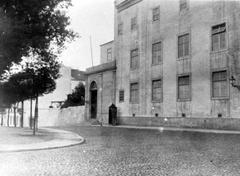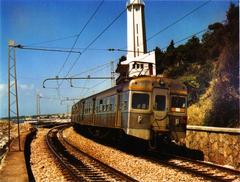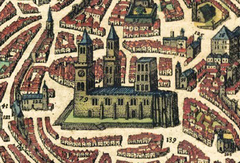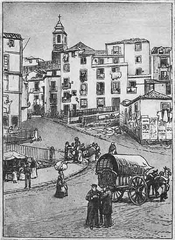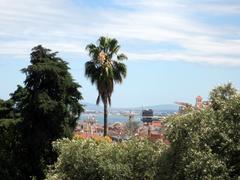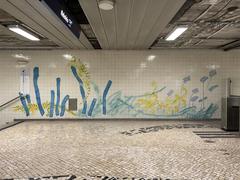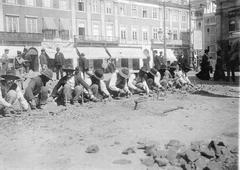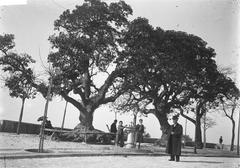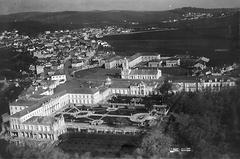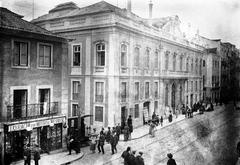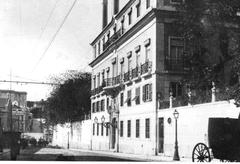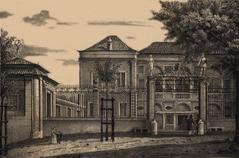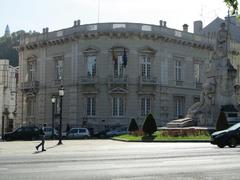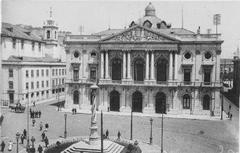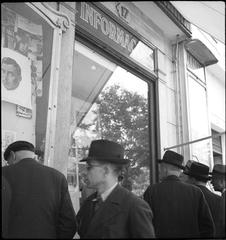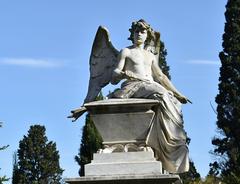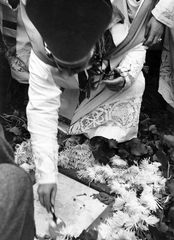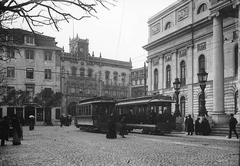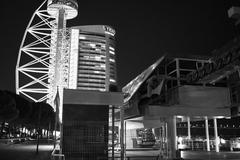Comprehensive Guide to Visiting Lisbon, Portugal
Date: 14/08/2024
Captivating Introduction
Welcome to Lisbon, where every cobblestone whispers tales of explorers, conquerors, and calamities. Imagine walking through a city that’s like a living history book, where the scent of freshly baked pastéis de nata mingles with the soulful strains of Fado music. Lisbon’s streets, lined with azulejos (vibrant ceramic tiles), tell stories of a rich past and a dynamic present. From its ancient Celtic origins to its role as a hub during the Age of Discovery, Lisbon has always been a city of significance (World History Encyclopedia).
Picture yourself standing at the Belém Tower, a sentinel of the Tagus River, or wandering through the narrow, winding streets of Alfama, where every corner hides a secret. Lisbon’s architecture is a testament to its resilience, having been rebuilt after the devastating earthquake of 1755 (World History Encyclopedia). Whether you’re exploring the grand monuments of the Age of Discovery or savoring a meal in a family-run tasca, Lisbon offers a sensory journey like no other.
But Lisbon isn’t just about the past. It’s a vibrant, cosmopolitan city that seamlessly blends its rich historical heritage with modern amenities. From contemporary art galleries to trendy boutiques in the LX Factory, Lisbon caters to diverse tastes and interests (Discover Walks). Ready to dive in? Let’s explore the depths of Lisbon’s history, culture, and charm together.
Table of Contents
- Historical Overview
- Ancient Beginnings
- Roman Era
- Moorish Influence
- The Reconquista and the Birth of Portugal
- Age of Discovery
- The 1755 Earthquake
- 19th and 20th Centuries
- Modern Lisbon
- Time-Traveling Through Lisbon: Visitor Tips
- Hidden Gems and Local Secrets
- Key Historical Sites
- A Sensory Journey Through Lisbon
- Cultural Context and Etiquette
- Call to Action
- Top Attractions in Lisbon
- Cultural Insights
- Fado Music
- Architectural Marvels
- The Art of Azulejos
- Literary Heritage
- Festivals and Celebrations
- Culinary Delights
- Traditional Crafts
- The Influence of the Age of Discoveries
- Contemporary Art Scene
- LGBTQ+ Friendly Destination
- Day Trips and Surrounding Areas
- Practical Tips for Visitors
- Local Lingo Lessons
- Seasonal Highlights
- Myth Busting and Surprises
- Storytelling Elements
- FAQ
- Call to Action
Historical Overview of Lisbon
Ancient Beginnings
Lisbon is one of the oldest cities in Western Europe, with its origins tracing back to the first Celtic settlements. Around 1200 BCE, the Phoenicians established a trading station in the region, marking the beginning of Lisbon’s long history as a significant port city. The city’s strategic location on the banks of the Tagus River and its proximity to the Atlantic Ocean made it a crucial hub for trade and cultural exchange (World History Encyclopedia).
Roman Era
From 205 BCE to 409 CE, Lisbon was under Roman control. During this period, the city, known as Olisipo, flourished as a part of the Roman Empire. The Romans left a lasting impact on Lisbon’s infrastructure, including roads, bridges, and aqueducts. Remnants of Roman influence can still be seen today, such as the Roman Theatre Museum, which showcases the remains of a Roman theatre discovered in the 18th century (Discover Walks).
Moorish Influence
In the 8th century CE, the Moors conquered Lisbon, and their rule lasted until 1147 CE. The Moors significantly influenced Lisbon’s architecture, culture, and urban layout. The Alfama district, with its narrow, winding streets and whitewashed houses, is a testament to the Moorish legacy. The Castelo de São Jorge, originally a Moorish fortification, offers panoramic views of the city and is a prominent historical site (Your Lisbon Guide).
The Reconquista and the Birth of Portugal
In 1147, Afonso Henriques, the first king of Portugal, captured Lisbon from the Moors during the Second Crusade. This event marked the beginning of Lisbon’s integration into the newly established Kingdom of Portugal. The Lisbon Cathedral, or Sé de Lisboa, was constructed shortly after the city’s conquest and remains a symbol of Lisbon’s resilience and religious significance (Discover Walks).
Age of Discovery
The 15th and 16th centuries were a golden era for Lisbon, as it became the capital of the Portuguese Empire during the Age of Discovery. Portuguese explorers, such as Vasco da Gama, embarked on voyages that expanded the known world and established trade routes to Africa, Asia, and the Americas. The profits from these expeditions funded the construction of grand monuments, including the Jerónimos Monastery and the Belém Tower, both of which are UNESCO World Heritage Sites (Lisbon Portugal Tourism).
The 1755 Earthquake
On November 1, 1755, Lisbon was struck by a devastating earthquake, followed by a tsunami and fires that destroyed much of the city. The earthquake had a profound impact on Lisbon’s architecture and urban planning. The Marquis of Pombal, the Prime Minister at the time, led the reconstruction efforts, resulting in the creation of the Baixa district with its grid-like streets and neoclassical buildings (World History Encyclopedia).
19th and 20th Centuries
The 19th century saw Lisbon’s expansion and modernization, with the construction of new neighborhoods and infrastructure. The city played a significant role in the Portuguese Revolution of 1910, which led to the establishment of the Portuguese Republic. During the 20th century, Lisbon continued to grow and develop, despite political upheavals, including the Carnation Revolution of 1974, which ended decades of dictatorship and restored democracy in Portugal (Earth Trekkers).
Modern Lisbon
Today, Lisbon is a vibrant and cosmopolitan city that seamlessly blends its rich historical heritage with modern amenities. The city’s historic neighborhoods, such as Alfama, Baixa, and Belém, offer a glimpse into its storied past, while contemporary attractions, including museums, galleries, and restaurants, cater to diverse tastes and interests. Visitors can explore the ruins of the Carmo Convent, which was partially destroyed in the 1755 earthquake and now houses the Carmo Archaeological Museum (Discover Walks).
Time-Traveling Through Lisbon: Visitor Tips
- Best Time to Visit: Spring (March to May) and fall (September to November) are ideal times to visit Lisbon, as the weather is mild and the city is less crowded (Your Lisbon Guide).
- Getting Around: Lisbon’s public transportation system, including trams, buses, and the metro, is efficient and affordable. The iconic Tram 28 is a popular way to explore the city’s historic neighborhoods.
- Accommodation: Staying in historic accommodations, such as boutique hotels in Alfama or Baixa, allows visitors to immerse themselves in Lisbon’s history (Your Lisbon Guide).
- Culinary Delights: Lisbon’s culinary scene is a reflection of its diverse history. Traditional dishes, such as bacalhau à brás (salted cod) and pastéis de nata (custard tarts), are must-tries. The Alfama district is known for its family-run tascas (taverns) serving authentic Portuguese cuisine (Your Lisbon Guide).
Hidden Gems and Local Secrets
- Hidden Fado Bars: Tucked away in Alfama’s labyrinthine streets, you might stumble upon a hidden Fado bar where locals serenade the night away.
- Oldest Bookstore: Find the oldest bookstore in the world in Chiado and browse its ancient tomes.
Key Historical Sites
- Castelo de São Jorge: A Moorish castle offering stunning views of Lisbon and a glimpse into the city’s medieval past (Your Lisbon Guide).
- Jerónimos Monastery: A masterpiece of Manueline architecture and the resting place of Vasco da Gama (Lisbon Portugal Tourism).
- Belém Tower: A symbol of the Age of Discovery and a UNESCO World Heritage Site (Lisbon Portugal Tourism).
- Lisbon Cathedral (Sé de Lisboa): The oldest church in the city, dating back to the 12th century (Discover Walks).
- Carmo Convent: The ruins of a Gothic convent partially destroyed in the 1755 earthquake, now housing the Carmo Archaeological Museum (Discover Walks).
A Sensory Journey Through Lisbon
Feel the cool breeze off the Tagus River, hear the soulful melodies of Fado music, and taste the crispy, warm pastéis de nata. Lisbon’s rich history, from its ancient beginnings to its modern-day vibrancy, makes it a captivating destination for history enthusiasts and casual travelers alike. The city’s blend of historical landmarks, cultural influences, and contemporary attractions ensures a memorable experience for all visitors.
Cultural Context and Etiquette
When in Lisbon, don’t be surprised if a local offers you a shot of Ginjinha – it’s their way of saying welcome! Say ‘Olá’ (hello) and ‘Obrigado’ (thank you) – but be careful, ‘Obrigado’ turns to ‘Obrigada’ if you’re female!
Call to Action
Ready to explore the depths of Lisbon’s history and charm? Download the Audiala app and make the most out of your visit. With Audiala, every step you take in Lisbon becomes a journey through time. Dive into local secrets, enjoy interactive challenges, and let Audiala be your personal guide in this mesmerizing city.
Top Attractions in Lisbon
Discover the Charms of Belém
Belém District: Where History Sets Sail
Belém isn’t just a neighborhood; it’s a voyage through time. Imagine the scent of freshly baked Pastéis de Belém wafting through the air as you walk along the same paths that navigators like Vasco da Gama once tread.
Jerónimos Monastery: An Architectural Masterpiece
This stunning Manueline marvel was built in the early 16th century to celebrate Vasco da Gama’s Indian voyage. Feel the cool touch of intricately carved stone that tells tales of Portugal’s Age of Exploration. Wander through the cloisters and say hello to the tombs of Vasco da Gama and Luís de Camões (Dive deeper).
Tower of Belém: Sentinel of the Tagus
Standing strong since the 16th century, this fortress offers panoramic views of the Tagus River. As you explore its rooms and terraces, imagine the cannon fire that once protected Lisbon from invaders (Learn more).
Alfama: Lisbon’s Soul
Alfama District: Where Every Street is a Story
Lose yourself in the labyrinth of narrow streets, where the sound of traditional Fado music fills the air and every corner has a tale to tell. This is Alfama, the heartbeat of Lisbon’s history.
São Jorge Castle: A Fortress with a View
Perched atop a hill, this 11th-century castle offers breathtaking vistas of Lisbon and the Tagus River. Explore its towers, walls, and the archaeological site that whispers secrets from the Iron Age (Uncover more).
Sé Cathedral: A Testament to Time
As Lisbon’s oldest church, this Romanesque-Gothic beauty has weathered centuries and earthquakes. Its cloisters hold archaeological treasures that unveil the city’s ancient past (Discover more).
The Beating Heart of Baixa
Baixa District: Where Tradition Meets Modernity
Rebuilt after the 1755 earthquake, Baixa is the bustling core of Lisbon, with its neoclassical architecture and grid-like streets teeming with life.
Praça do Comércio: The Grand Entrance
One of Lisbon’s largest and most iconic squares, it boasts the majestic Arco da Rua Augusta and a statue of King José I. Stroll around and soak in the elegance of 18th-century buildings (Get the details).
Santa Justa Lift: A View from the Top
Built in the early 20th century, this iron elevator offers a bird’s-eye view of Lisbon’s historic center. Designed by Raoul Mesnier du Ponsard, a student of Gustave Eiffel, it’s a must-visit for panoramic lovers (Find out more).
Vibrant Vibes in Chiado and Bairro Alto
Chiado and Bairro Alto: The Heartbeat of Culture and Nightlife
From trendy shops to vibrant nightlife, these neighborhoods are where Lisbon’s creative spirit thrives.
Convento do Carmo: A Hauntingly Beautiful Ruin
This former Gothic church and convent, partially destroyed in the 1755 earthquake, stands as a poignant reminder of the past. The Carmo Archaeological Museum within offers a journey through Lisbon’s history (Learn more).
LX Factory: Creativity Unleashed
Under the Ponte 25 de Abril bridge, this former industrial complex has transformed into a creative hub. Explore unique boutiques, enjoy street art, and dine at some of Lisbon’s trendiest spots (Discover more).
Embrace Modern Lisbon
Parque das Nações: The Future is Here
Developed for Expo ‘98, this district is a testament to Lisbon’s blend of tradition and innovation. Visit the Lisbon Oceanarium, the Vasco da Gama Tower, and enjoy a stroll along the riverside promenade (More here).
MAAT - Museum of Art, Architecture, and Technology
This contemporary museum, housed in a striking building by Amanda Levete, showcases the intersection of art, architecture, and technology. Don’t miss the rooftop terrace for panoramic views! (Find out more).
Essentials for the Lisbon Explorer
Getting Around: The Joy of Trams and More
Lisbon’s public transportation, from trams to metro lines, makes exploring a breeze. Hop on the iconic Tram 28 for a scenic historic tour for just around 3 EUR (More info).
Where to Stay: Find Your Perfect Spot
Whether you prefer the central buzz of Baixa, the historic charm of Alfama, or the nightlife of Bairro Alto, booking in advance is key, especially during peak seasons (Learn more).
Savor Lisbon: A Culinary Adventure
From Pastel de Nata to Bacalhau à Brás, Lisbon’s culinary scene is a feast for the senses. Head to the Time Out Market for a delicious variety of local dishes (More details).
Stay Safe: Tips for a Smooth Journey
Lisbon is generally safe, but beware of pickpockets in crowded areas. Keep your belongings secure and stay vigilant (Safety tips).
Cultural Insights
Fado Music: The Soul of Lisbon
If music could capture the essence of a city, Fado would be Lisbon’s heartbeat. Originating in the early 19th century, this melancholic and soulful genre is performed in intimate venues called “casas de fado.” Picture yourself in a dimly lit room, with a singer’s voice echoing the emotions of longing and love, accompanied by the melancholic strumming of a Portuguese guitar. For an immersive experience, visit the Museum of Fado, where the exhibits and live performances will leave you with a deep sense of “saudade.”
Architectural Marvels
Lisbon’s architecture narrates tales of its grand past. The Manueline style, with its intricate stonework and maritime motifs,is a visual feast. Stand in awe of the Belém Tower, a fortress that once guarded the city’s harbor, or wander through the majestic Jerónimos Monastery. Don’t miss the hidden gems—like the lesser-known but equally stunning Igreja de São Domingos.
The Art of Azulejos
Azulejos, the vibrant ceramic tiles that adorn Lisbon’s buildings, tell stories in color and pattern. Walk through the Alfama district, and you’ll see facades adorned with these beautiful tiles. For a deeper dive into this art form, the National Tile Museum showcases a journey from the 15th century to today. Pro tip: Look out for the quirky modern azulejos scattered throughout the city.
Literary Heritage
Lisbon breathes literature. Wander through the Bertrand Bookstore, the world’s oldest operating bookstore, and feel the literary magic. Dive into the world of Fernando Pessoa at the Casa Fernando Pessoa. And here’s a fun challenge: try to spot the Pessoa statues scattered around the city!
Festivals and Celebrations
Lisbon knows how to celebrate. The Festas de Lisboa in June is a month-long party honoring Saint Anthony, filled with parades, music, and sardine barbecues. For film buffs, the Lisbon & Sintra Film Festival is a cinematic feast. Tip: Don’t miss the smaller, local festivals for a true taste of Lisbon life.
Culinary Delights
Prepare your taste buds for a journey through Lisbon’s culinary landscape. From Bacalhau à Brás to the iconic Pastel de Nata, the flavors are unforgettable. Visit the TimeOut Market for a gastronomic adventure. And trust us, the Pastéis de Belém at the historic Pastéis de Belém are worth every calorie.
Traditional Crafts
Lisbon’s artisans are the keepers of tradition, crafting ceramics, textiles, and leatherwork with skill and passion. The LX Factory is a creative hub where you can find contemporary twists on these crafts. For a treasure hunt, explore the Feira da Ladra, Lisbon’s oldest flea market.
The Influence of the Age of Discoveries
The Age of Discoveries left an indelible mark on Lisbon. The Monument to the Discoveries and the Maritime Museum in Belém celebrate the explorers who shaped the world. Fun fact: Did you know that Lisbon was once the hub of global trade?
Contemporary Art Scene
Lisbon’s contemporary art scene is as vibrant as its history. The Berardo Collection Museum and the MAAT - Museum of Art, Architecture, and Technology offer a feast for the eyes with works from Picasso to Warhol. Insider tip: Check out the street art in neighborhoods like Bairro Alto and Mouraria.
LGBTQ+ Friendly Destination
Lisbon welcomes everyone with open arms. The Lisbon Pride Parade is a vibrant celebration of diversity and equality. For a lively night out, head to Bairro Alto and Príncipe Real, where the LGBTQ+ community thrives.
Day Trips and Surrounding Areas
Extend your Lisbon adventure with day trips to nearby gems. Explore the fairy-tale palaces of Sintra or relax on the beaches of Cascais. Both are just a short journey away and offer a refreshing change of pace.
Practical Tips for Visitors
To truly enjoy Lisbon, comfortable footwear is a must for navigating its hilly terrain and cobblestone streets. Learn a few Portuguese phrases like “por favor” (please) and “obrigado/obrigada” (thank you) to show your appreciation for the local culture. And don’t forget to visit the city’s “miradouros” (viewpoints) for breathtaking panoramas.
Local Lingo Lessons
Impress the locals with some essential Portuguese phrases. Try saying “Bom dia” (Good morning) or “Desculpe” (Excuse me). Here’s a fun one: “Estou a aprender português” (I’m learning Portuguese). Use these and watch the smiles appear.
Seasonal Highlights
Lisbon transforms with the seasons. Spring brings blooming jacaranda trees, while summer is perfect for beach outings. Autumn offers a calmer, cooler vibe, and winter, though mild, is festive with Christmas markets and lights.
Myth Busting and Surprises
Think you know Lisbon? Think again! Despite its hilly terrain, Lisbon is incredibly walkable. And while it’s famous for its sunny weather, don’t be surprised by the occasional rain shower—always carry an umbrella!
Storytelling Elements
Lisbon is a city of stories. Imagine the sailors of the Age of Discoveries setting sail from Belém or the poets finding inspiration in the Alfama’s narrow alleys. Each corner of Lisbon has a tale to tell.
FAQ
Q: What’s the best time to visit Lisbon? A: Spring (March to May) and fall (September to November) offer pleasant weather and fewer crowds.
Q: Is Lisbon a safe city? A: Yes, Lisbon is generally safe, but always stay aware of your surroundings, especially in crowded areas.
Q: How can I get around Lisbon? A: Public transport is efficient, with trams, buses, and the metro. Walking is also a great way to explore.
Call to Action
Ready to discover Lisbon? Let Audiala be your guide! Our tour guide app offers beautifully crafted, concise yet deep audio guides that will enhance your exploration. Dive into Lisbon’s rich culture and vibrant life with Audiala by your side.
Call to Action
As we conclude our journey through Lisbon, it’s clear that this city is a tapestry woven from centuries of history, culture, and resilience. From the ancient ruins that whisper tales of the past to the modern neighborhoods that buzz with contemporary life, Lisbon is a city that invites exploration and discovery at every turn. Whether you’re standing atop São Jorge Castle, gazing out over the city and the Tagus River, or getting lost in the labyrinthine streets of Alfama, Lisbon offers an experience that engages all the senses.
The city’s rich culinary scene, vibrant arts, and welcoming atmosphere make it a must-visit destination. Imagine tasting the crispy, warm pastéis de nata or feeling the cool breeze off the Tagus River as you listen to the melancholic melodies of Fado music. Lisbon’s blend of historical landmarks, cultural influences, and contemporary attractions ensures that every visitor finds something to cherish (Earth Trekkers).
So, are you ready to explore Lisbon’s depths and uncover its hidden gems? Download the Audiala app and let it be your personal guide. With Audiala, every step in Lisbon becomes a journey through time, filled with local secrets, interactive challenges, and expert insights. Dive into the city’s rich culture and vibrant life, and make the most out of your visit with Audiala by your side. Don’t just visit Lisbon—experience it in all its glory.
References
- World History Encyclopedia, 2023, Author source url
- Discover Walks, 2023, Author source url
- Lisbon Portugal Tourism, 2023, Author source url
- Your Lisbon Guide, 2023, Author source url
- Earth Trekkers, 2023, Author source url
- Discover Walks, 2023, Author source url
- Museum of Fado, 2023, Author source url
- TimeOut Market, 2023, Author source url
- Pastéis de Belém, 2023, Author source url
- LX Factory, 2023, Author source url
- National Tile Museum, 2023, Author source url
- Casa Fernando Pessoa, 2023, Author source url
- Festas de Lisboa, 2023, Author source url
- Lisbon & Sintra Film Festival, 2023, Author source url
- Monument to the Discoveries, 2023, Author source url
- Maritime Museum, 2023, Author source url
- Berardo Collection Museum, 2023, Author source url
- MAAT, 2023, Author source url
- Lisbon Pride Parade, 2023, Author source url
- Feira da Ladra, 2023, Author source url
